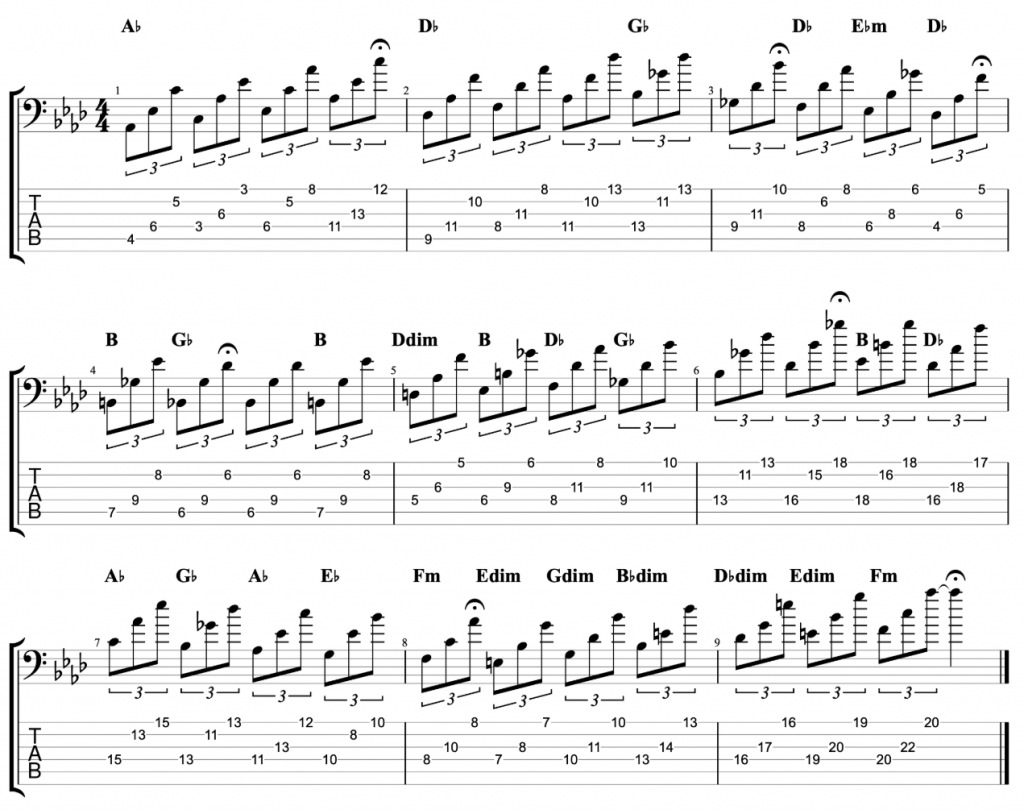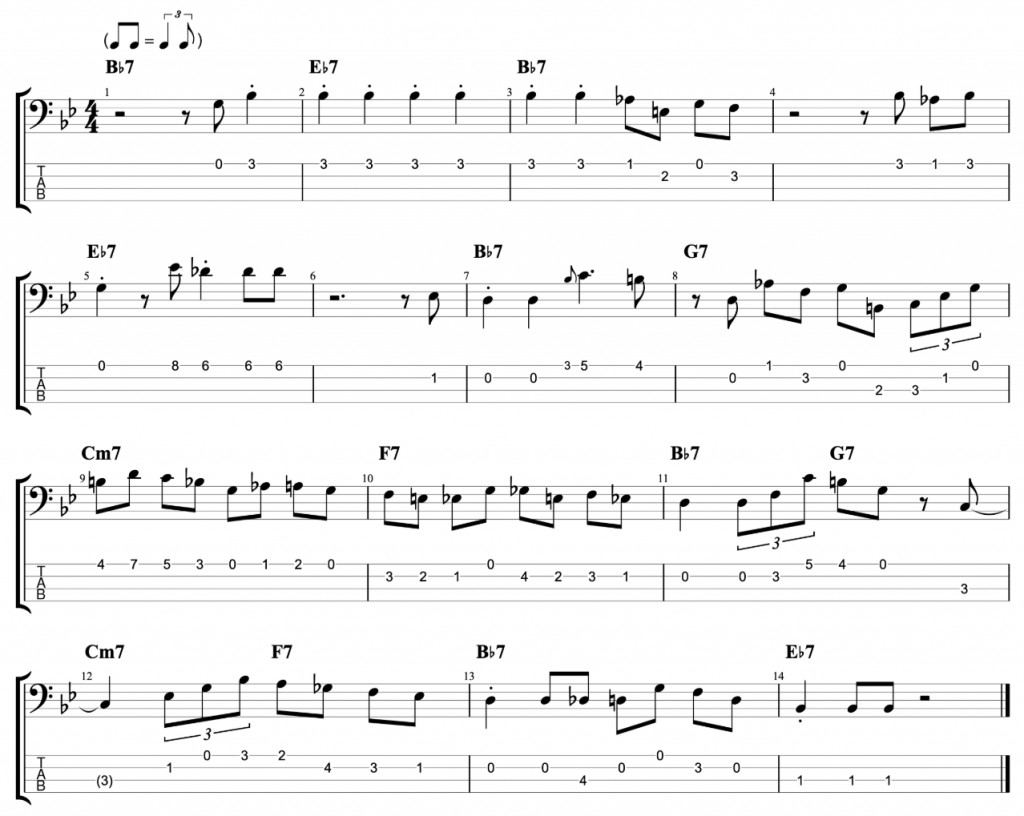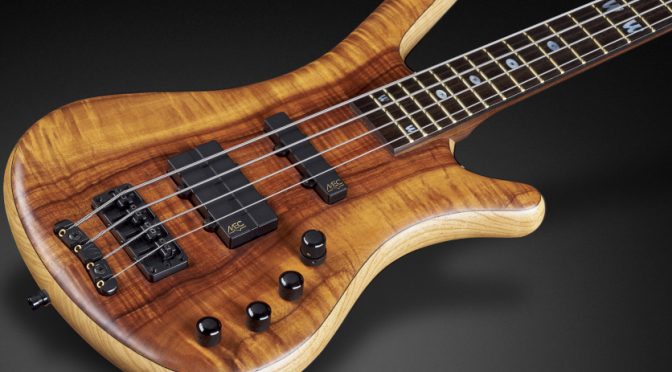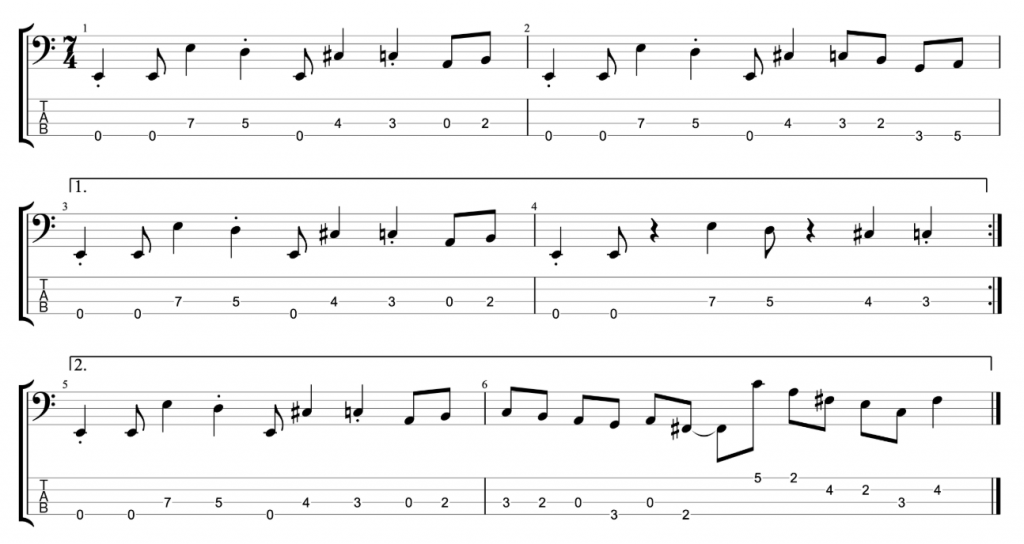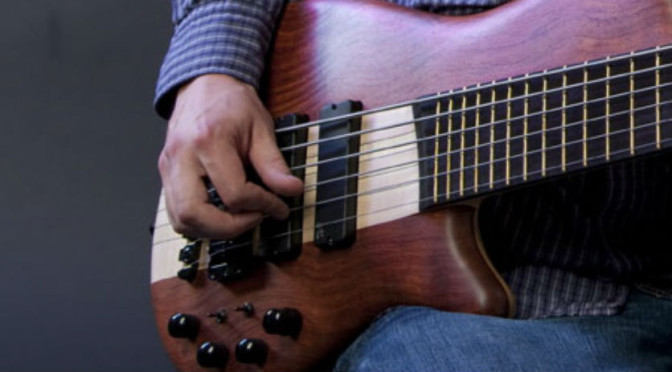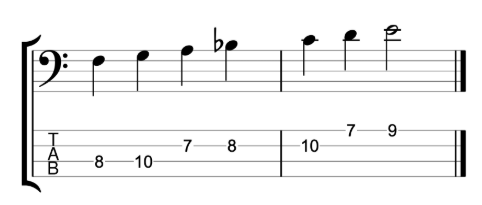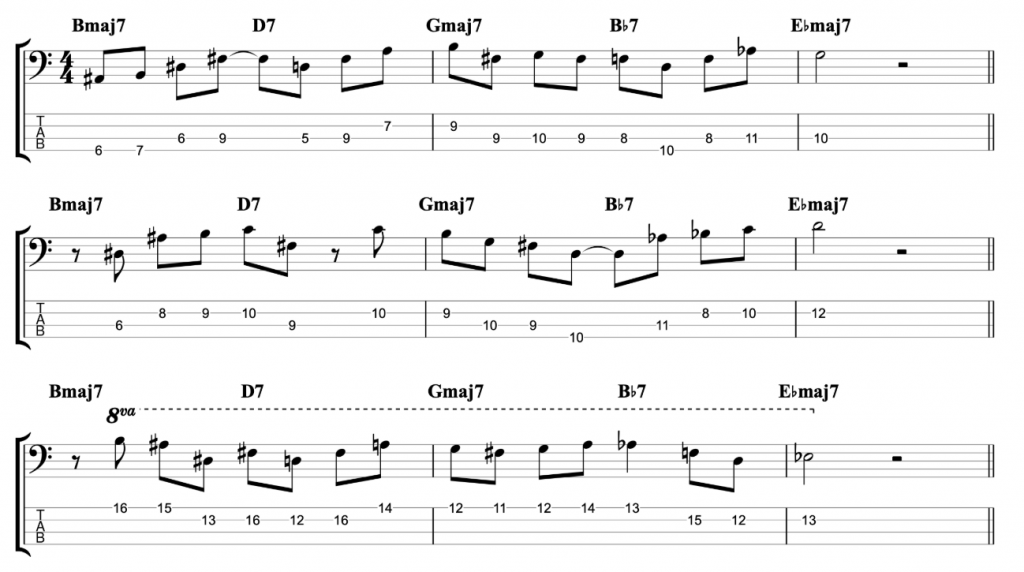Triads Exercise on Six String Bass – Bass Practice Diary – 11th June 2019
This is a triads exercise that I’ve adapted onto bass guitar from something that I saw the guitarist Pat Metheny play. The original version of the exercise came from this video.
He doesn’t start playing the triads until about 3 minutes into the video. And it isn’t clear if he’s improvising or playing an exercise that he’s previously practiced. But I thought it sounded great and it looked like a great way to practice triads and their inversions. So I adapted a short section of what he played onto my six string bass and I’ve turned it into an exercise.
Triads and their inversions
A triad is a three note chord. The obvious way to arrange a triad in root position is root, third, fifth. Then you can play two inversions, third, fifth, root and fifth, root, third.
But that’s not necessarily the best way to play them on fretted instruments like guitars and basses. In this exercise, when Metheny plays a root position triad, he skips the third and goes straight to the fifth. Then he plays the third up an octave, a tenth above the root note. So using this arrangement, the three inversions of the triads are root, fifth, third. Then third, root, fifth and finally fifth, third, root.
Below is an Ab major triad and a Bb minor triad arranged in this way on four string bass.

There are two other common types of triad, diminished and augmented. These are actually much simpler to play because they’re symmetrical. Meaning that they use the same interval over and over. Diminished arpeggios divide the octave up into four minor third intervals and augmented arpeggios divide the octave into three major third intervals. Which is why there are four inversions of the diminished triad below but only three of the augmented triad.

The Exercise
This is the exercise. It mostly uses the major triads and the inversions. But there are a few minor and diminished triads. There are no augmented triads in this exercise. I’ve written the chords on top to help you keep track of which chord you’re playing.
